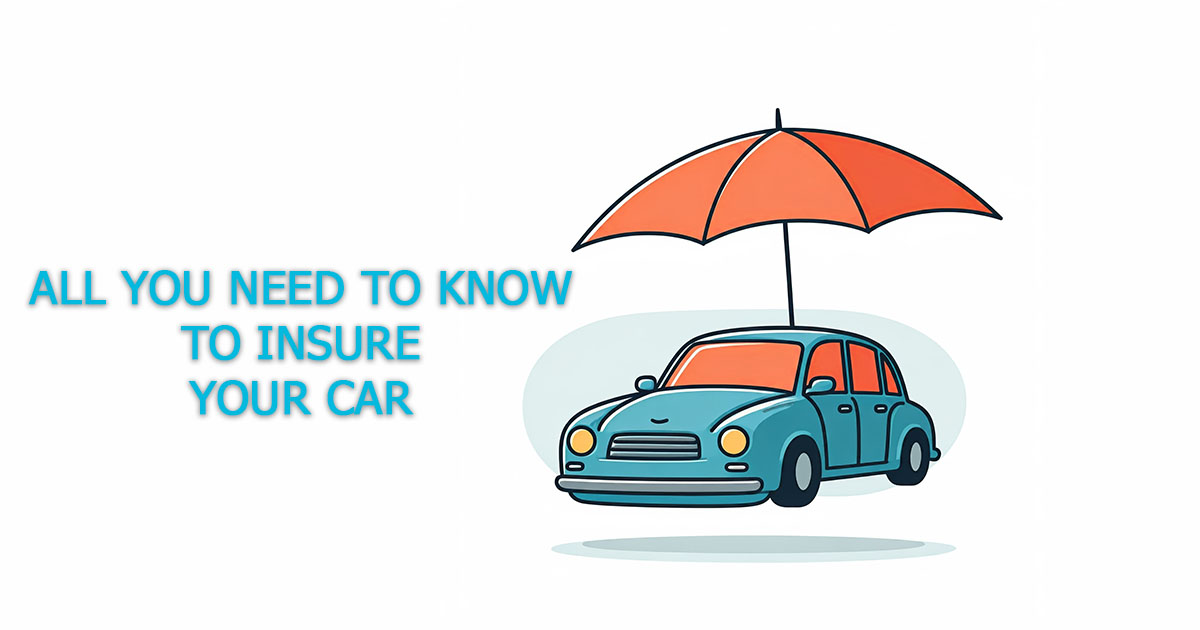Car Insurance 101: Understanding Coverage, Rates, and Discounts

Car insurance can seem complicated, but breaking it down into key areas—coverage types, factors affecting rates, and discounts—can make it easier to navigate and select the right policy. Here’s a comprehensive look at car insurance basics:
1. Understanding Car Insurance Coverage
Car insurance typically includes a combination of the following types of coverage:
- Liability Insurance: Covers the costs of injury or property damage you cause to others in an accident. Most states require a minimum amount of liability coverage.
- Collision Coverage: Pays for repairs or replacement of your car if it’s damaged in an accident, regardless of who’s at fault. This is often required if you finance or lease your vehicle.
- Comprehensive Coverage: Covers damages to your car caused by non-collision events, like theft, fire, vandalism, or natural disasters.
- Personal Injury Protection (PIP): Covers medical expenses, lost wages, and other personal costs if you or your passengers are injured, regardless of fault. PIP is required in some states.
- Uninsured/Underinsured Motorist Coverage: Protects you if you’re in an accident with a driver who lacks sufficient insurance. It covers medical expenses and other damages.
- Medical Payments Coverage: Similar to PIP, but with more limited coverage, helping to pay medical bills for you and your passengers after an accident, regardless of fault.
2. Factors That Affect Car Insurance Rates
Your car insurance premium is determined by several factors, including:
- Driving Record: A clean record with no accidents or violations generally leads to lower rates, while a history of accidents or tickets can increase your premium.
- Vehicle Type: Cars with high safety ratings or anti-theft features usually cost less to insure, while luxury or sports cars may increase rates due to higher repair costs.
- Location: Urban areas with high traffic and crime rates may result in higher premiums, while rural areas generally have lower rates.
- Age and Experience: Younger, less experienced drivers often pay more, as they’re statistically more likely to be involved in accidents. Older drivers, especially those with good records, may pay less.
- Credit Score: In many states, insurers use credit scores to assess risk, assuming that people with better credit are less likely to file claims.
- Annual Mileage: The more you drive, the higher the risk of accidents, so those with long commutes may pay more for coverage.
- Coverage Level and Deductibles: Higher coverage levels and lower deductibles generally mean higher premiums. Selecting a higher deductible can lower your premium, but you’ll pay more out of pocket if you file a claim.
3. Common Car Insurance Discounts
Many insurers offer discounts to help lower your premium. Common discounts include:
- Safe Driver Discount: For maintaining a clean driving record with no accidents or violations over a certain period.
- Multi-Policy Discount: Bundling auto insurance with other types of insurance (like homeowners or renters) can lead to significant savings.
- Multi-Car Discount: Insuring more than one vehicle under the same policy can lower rates.
- Good Student Discount: Students under 25 who maintain good grades (usually a B average or higher) may qualify for discounts.
- Usage-Based Discounts: Programs like telematics that monitor driving behavior (such as speed, braking, and mileage) can reward safe driving with lower premiums.
- Low Mileage Discount: For drivers who don’t use their car often or drive fewer miles annually.
- Anti-Theft and Safety Device Discounts: Installing devices like alarms, GPS trackers, or anti-lock brakes may qualify you for discounts.
- Loyalty Discount: Some insurers offer discounts if you stay with them over multiple years.
Tips for Choosing Car Insurance
- Assess Your Needs: Decide on the coverage that best fits your car’s value, your driving habits, and your risk tolerance. If you own an older car, for instance, you might opt out of comprehensive or collision coverage.
- Shop Around and Compare Quotes: Different insurers use different criteria to determine rates, so it’s a good idea to compare quotes from several companies to find the best value.
- Consider Your Deductible: Higher deductibles can mean lower premiums but will require you to pay more out-of-pocket for claims. Find a balance that works with your budget.
- Take Advantage of Discounts: Check with your insurer to see what discounts are available, and consider whether bundling policies or installing safety features might make sense.
- Reevaluate Regularly: Review your policy annually to ensure it still meets your needs, especially if you have changes in your driving habits, location, or vehicle.
Understanding these elements can help you make informed decisions about your car insurance policy, ensuring you get the right balance of coverage and cost.










